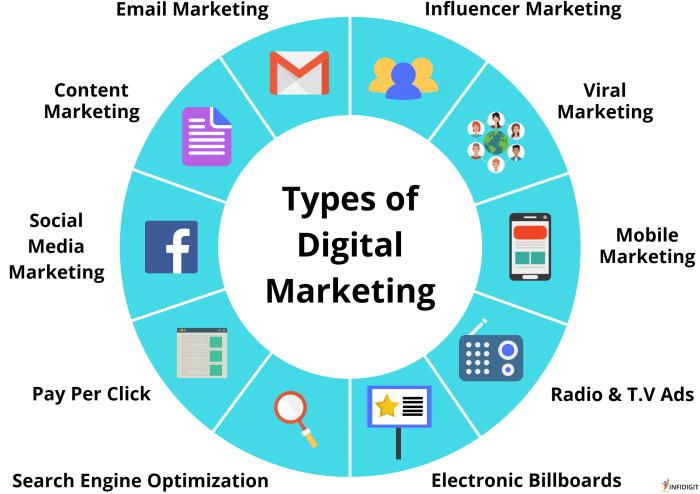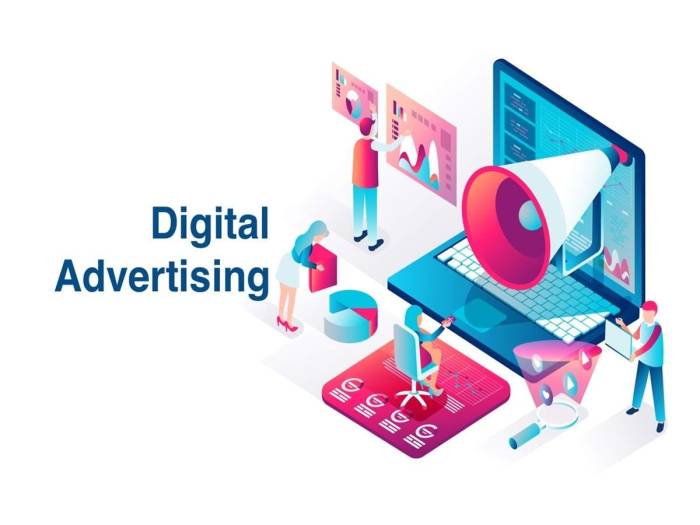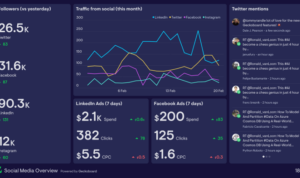Digital Advertising Basics introduces you to the core components of online marketing in a fresh and engaging way, perfect for those looking to dive into the world of digital ads. From understanding its definition to exploring various strategies, this guide has got you covered.
Definition of Digital Advertising
Digital advertising refers to the use of online platforms and technologies to promote products or services to a target audience. In the modern marketing landscape, digital advertising plays a crucial role in reaching consumers where they spend a significant amount of their time – on the internet. Unlike traditional advertising methods, digital advertising offers more precise targeting, real-time analytics, and the ability to adjust campaigns on the fly for optimal results.
Examples of Digital Advertising Platforms and Formats
- Social Media Advertising: Platforms like Facebook, Instagram, and Twitter offer businesses the opportunity to target specific demographics based on interests, behavior, and more.
- Search Engine Marketing (SEM): Google Ads and Bing Ads allow businesses to bid on s to have their ads appear in search engine results pages.
- Display Advertising: Banner ads, pop-ups, and video ads on websites and apps help increase brand visibility and drive traffic to a business’s website.
- Native Advertising: Sponsored content that seamlessly integrates with a platform’s organic content, such as promoted articles or videos on news websites.
How Digital Advertising Differs from Traditional Advertising Methods
- Targeting: Digital advertising allows for more precise targeting based on demographics, behavior, and interests, whereas traditional advertising often relies on broader audience segmentation.
- Interactivity: Digital ads can be interactive, engaging users through clickable links, videos, or animations, while traditional ads are typically static.
- Measurability: Digital advertising provides real-time analytics to track the performance of campaigns, such as click-through rates, conversions, and return on investment, which is more challenging to measure accurately with traditional advertising.
- Cost-effectiveness: Digital advertising can be more cost-effective, as businesses can set specific budgets, target specific audiences, and adjust campaigns in real-time based on performance data, compared to the fixed costs of traditional advertising channels.
Key Components of Digital Advertising
Digital advertising campaigns are made up of several key components that work together to reach the target audience effectively. These components include targeting, ad creatives, messaging, and more.
Targeting in Digital Advertising
Targeting plays a crucial role in digital advertising as it helps advertisers reach the right audience with their message. Through various targeting options such as demographics, interests, behaviors, and location, advertisers can ensure that their ads are shown to the most relevant audience for their products or services.
Ad Creatives and Messaging
The importance of ad creatives and messaging in digital advertising cannot be overstated. Compelling visuals, engaging copy, and a clear call-to-action are essential for capturing the audience’s attention and driving them to take the desired action. Ad creatives and messaging should be tailored to resonate with the target audience and convey the brand’s message effectively.
Digital Advertising Strategies

In the world of digital advertising, businesses utilize various strategies to reach their target audience and achieve their marketing goals. These strategies range from pay-per-click (PPC) advertising to display advertising and social media advertising. Each strategy has its own unique strengths and weaknesses, making it important for businesses to choose the right mix of tactics to maximize their advertising efforts.
Pay-Per-Click (PPC) Advertising
PPC advertising is a popular digital advertising strategy where advertisers pay a fee each time their ad is clicked. This method allows businesses to drive traffic to their websites quickly and effectively. One key advantage of PPC advertising is the ability to target specific s and demographics, ensuring that ads are shown to relevant audiences. However, the cost per click can add up quickly, making it essential to carefully monitor and optimize campaigns for maximum ROI.
Display Advertising
Display advertising involves placing visual ads on websites, apps, or social media platforms. These ads can come in various formats, such as banners, videos, or interactive ads. Display advertising is great for increasing brand awareness and reaching a wide audience. However, the effectiveness of display ads can vary based on placement, design, and targeting. Businesses need to test and optimize their display ad campaigns to see the best results.
Social Media Advertising, Digital Advertising Basics
Social media advertising leverages popular platforms like Facebook, Instagram, and Twitter to promote products or services. These ads can be highly targeted based on user demographics, interests, and behaviors. Social media advertising is known for its ability to drive engagement, build brand loyalty, and generate leads. Businesses can also take advantage of features like retargeting and lookalike audiences to improve ad performance.
Examples of Successful Digital Advertising Campaigns
– The “Share a Coke” campaign by Coca-Cola, where personalized bottles with people’s names led to a significant increase in sales and social media engagement.
– The “Dumb Ways to Die” campaign by Metro Trains, a catchy and creative animated video that went viral and successfully promoted railway safety.
– The “Oreo Dunk in the Dark” tweet during the 2013 Super Bowl blackout, which quickly capitalized on a trending moment and generated massive brand buzz.
Digital Advertising Metrics and Analytics: Digital Advertising Basics

In the world of digital advertising, metrics and analytics play a crucial role in determining the success of campaigns. By analyzing various metrics, advertisers can track the performance of their ads and make data-driven decisions to optimize their strategies.
Common Digital Advertising Metrics
- CTR (Click-Through Rate): This metric measures the percentage of people who clicked on an ad after seeing it. A high CTR indicates that the ad is compelling and engaging.
- CPC (Cost Per Click): CPC shows how much it costs for each click on an ad. It helps advertisers understand the efficiency of their ad spend.
- Conversion Rate: The conversion rate indicates the percentage of users who take a desired action after clicking on an ad, such as making a purchase or signing up for a newsletter.
- ROI (Return on Investment): ROI measures the profitability of an advertising campaign by comparing the revenue generated to the cost of the campaign.
Analytics Tools for Digital Advertising
Analytics tools like Google Analytics and Adobe Analytics are commonly used to track and optimize digital advertising performance. These tools provide valuable insights into user behavior, demographics, and traffic sources, allowing advertisers to make informed decisions on targeting and ad placements. By analyzing the data collected through these tools, advertisers can refine their strategies, improve targeting, and maximize the ROI of their campaigns.





